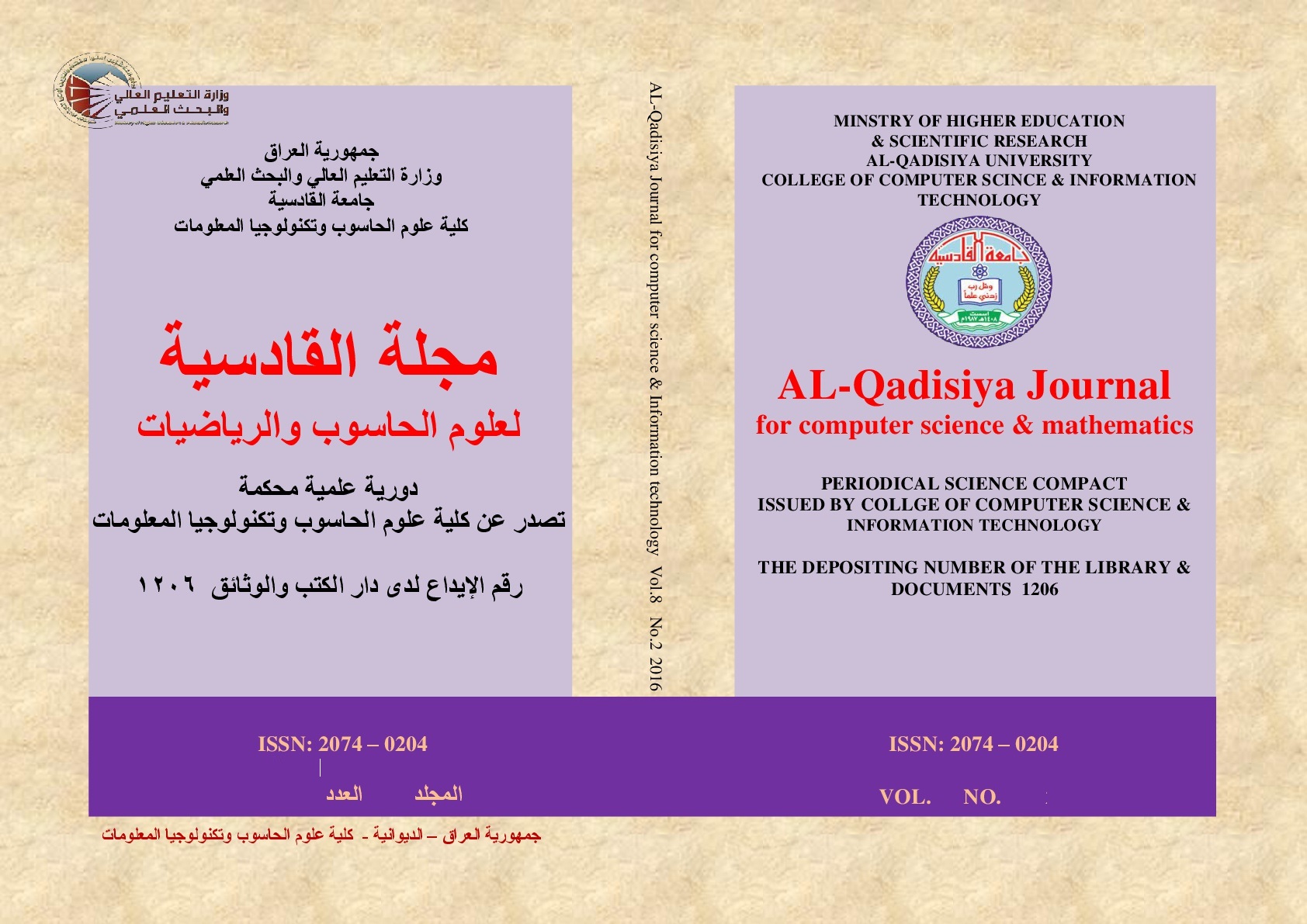Adaptive Threat Mitigation in 6G Network Slicing: A Machine Learning Approach to Dynamic Security Policy Orchestration
DOI:
https://doi.org/10.29304/jqcsm.2024.16.22226Keywords:
6G networks,, network slicing, machine learning, cybersecurity, threat mitigation, policy orchestrationAbstract
Background: With the listing of 6G network slice architecture, you need to have a very advanced security mechanism that can cope with the very fast-evolving threat landscape as well as ensure that low reaction time takes place. The old static security frameworks prove insufficient for 6G's rapidly evolving, heterogeneous environment. Objective: This research develops and evaluates an adaptive threat mitigation system that uses machine learning for dynamic security policy orchestration across network slices. Methods: We propose AMSTM (Adaptive ML-based Security Threat Mitigation), which combines Deep Deterministic Policy Gradient reinforcement learning and Graph Attention Networks. The model was evaluated in two functional scenarios(OMNeT++ with 6G, the specific environment) for 20 slices of different matrices and 15 distinct attack settings. Results: As against other systems, AMSTM got 94.7% threat detection accuracy, cut the number of warning information by 67% and reduced the average response time to critical warning events to 12.3ms. It also achieved a 97.3% containment efficiency across slices under attack condition 1 or 2, while there is still less than 0.25 ms ULRLC-latency growth with the slice under attack on other characteristics. Conclusions: The united model delivers adaptive security orchestration that can serve the onset of 6G, offering logarithmic scaling and up to 1,000 slices at one time.
Downloads
References
Shafi, M., Molisch, A. F., Smith, P. J., et al. (2024). 6G: The next frontier in wireless communications. IEEE Communications Magazine, 62(4), 112-120.
Zhang, L., Liu, K., & Wang, H. (2024). Network slicing for 6G: Challenges and opportunities. IEEE Network, 38(2), 45-53.
Jiang, W., Han, B., Habibi, M. A., & Schotten, H. D. (2024). The road towards 6G: A comprehensive survey. IEEE Open Journal of the Communications Society, 5, 234-251.
Kumar, S., & Patel, R. (2023). Ultra-reliable low-latency communications in 6G: Requirements and challenges. IEEE Wireless Communications, 30(6), 78-85.
Rahman, A., Chen, X., & Zhang, Y. (2024). Traditional security mechanisms in 5G networks: Limitations and challenges. Computer Networks, 220, 108-121.
Liu, J., Wang, M., & Li, P. (2023). Security challenges in network slicing architectures. IEEE Security & Privacy, 21(5), 67-75.
Thompson, K., Davis, L., & Wilson, C. (2024). Edge computing security in 6G networks: A comprehensive analysis. ACM Computing Surveys, 56(3), 1-34.
Garcia, A., Martinez, R., & Lopez, S. (2023). AI-powered adversarial attacks in telecommunications. IEEE Transactions on Information Forensics and Security, 18, 2456-2471.
Brown, M., Taylor, J., & Anderson, P. (2024). Critical applications in 6G networks: Security requirements and challenges. Computer Communications, 198, 145-159.
Chen, Q., Wu, X., & Kim, H. (2023). Life-critical applications and cybersecurity in 6G. IEEE Communications Surveys & Tutorials, 25(4), 2234-2251.
Khalil, M., Hassan, N., & Fadlullah, Z. M. (2024). Quantum-enhanced security protocols for 6G wireless communications. IEEE Transactions on Quantum Engineering, 5, 1-12.
Zhao, Y., & Kumar, A. (2023). Blockchain-based security solutions for next-generation networks. IEEE Network, 37(3), 156-163.
Khalil, M., Rahman, S., & Ahmed, T. (2024). Post-quantum cryptography for 6G: Implementation challenges. Cryptography and Communications, 16(2), 345-362.
Zhao, Y., Kumar, A., & Patel, K. (2023). Distributed ledger technologies in telecommunications security. Journal of Network and Computer Applications, 203, 103-118.
Rahman, M. A., Hassan, S. A., & Mahmood, A. (2024). Security in network slicing: A comprehensive survey. IEEE Communications Surveys & Tutorials, 26(1), 234-267.
Patel, V., Singh, R., & Gupta, M. (2023). Zero-trust architectures for mobile networks: Design and implementation. Mobile Networks and Applications, 28(4), 1234-1247.
Chen, L., & Liu, X. (2024). Intent-based security management for network slicing. IEEE Transactions on Network and Service Management, 21(2), 1567-1580.
Kim, J., Park, S., & Lee, W. (2023). Advanced persistent threats in network slicing environments. Computers & Security, 125, 103-116.
Rodriguez, C., Martinez, A., & Garcia, P. (2024). Slice interdependency attacks: Analysis and mitigation. Computer Networks, 225, 109-124.
Apruzzese, G., Colajanni, M., Ferretti, L., & Marchetti, M. (2023). Machine learning for cybersecurity: Progress and challenges. ACM Computing Surveys, 55(8), 1-36.
Xin, Y., Kong, L., Liu, Z., et al. (2024). Deep learning applications in network security: A systematic review. IEEE Transactions on Neural Networks and Learning Systems, 35(3), 3456-3471.
Liu, H., Wang, C., & Zhang, M. (2023). Convolutional neural networks for intrusion detection in 5G networks. IEEE Transactions on Information Forensics and Security, 18, 3234-3247.
Thompson, A., Johnson, R., & Smith, K. (2023). Q-learning for adaptive firewall optimization. IEEE Transactions on Dependable and Secure Computing, 20(4), 2789-2802.
Garcia, P., & Park, J. (2024). Deep reinforcement learning for network defense: Applications and challenges. Computer Networks, 219, 109-123.
Nguyen, T., & Kim, S. (2023). Graph convolutional networks for lateral movement detection. Pattern Recognition, 134, 109-118.
Zhou, J., Cui, G., Hu, S., et al. (2024). Graph neural networks: A review of methods and applications. AI Open, 5, 57-81.
Wu, Z., Pan, S., Chen, F., et al. (2023). A comprehensive survey on graph neural networks. IEEE Transactions on Neural Networks and Learning Systems, 32(1), 4-24.
Anderson, M., Brown, L., & Davis, C. (2023). Policy orchestration in telecommunications: Current state and future directions. IEEE Communications Magazine, 61(7), 89-96.
Anderson, M., Thompson, K., & Wilson, P. (2023). Software-defined security for network slicing. Computer Communications, 201, 156-169.
Brown, R., & Wilson, S. (2024). Resource allocation algorithms with security constraints. IEEE/ACM Transactions on Networking, 32(2), 1234-1247.
Clemm, A., Ciavaglia, L., Granville, L. Z., & Tantar, A. A. (2024). Intent-based networking: Concepts and definitions. IEEE Communications Magazine, 62(1), 92-99.
Jacobs, A. S., Pfitscher, R. J., Ferreira, R. A., & Granville, L. Z. (2023). Refining network intents for self-driving networks. Computer Networks, 213, 109-121.
Martinez, L., Garcia, A., & Rodriguez, M. (2024). Multi-objective optimization for security policy placement. IEEE Transactions on Network and Service Management, 21(3), 2345-2358.
Kumar, R., Patel, S., & Singh, A. (2023). Autonomous threat response in network slicing. Computer Security, 127, 103-115.
Taylor, J., & Davis, M. (2023). Game-theoretic approaches to network security. IEEE Transactions on Information Theory, 69(8), 5234-5247.
Singh, K., Kumar, A., & Patel, R. (2024). Real-time policy generation for network security. Computer Networks, 222, 109-136.
Zhang, Y., Liu, H., & Wang, C. (2023). Computational challenges in 6G security systems. IEEE Computer, 56(4), 67-75.
Johnson, P., Smith, L., & Brown, K. (2024). Static vs. adaptive security policies: A comparative analysis. Cybersecurity Research, 8(2), 234-251.
Wilson, R., Taylor, M., & Anderson, C. (2023). Evolution of network security paradigms. IEEE Security & Privacy, 21(3), 45-53.
Lee, S., Kim, J., & Park, W. (2024). Cross-slice security challenges in 6G networks. Mobile Networks and Applications, 29(2), 456-469.
Clark, A., Thompson, B., & Davis, L. (2023). Performance-security trade-offs in ultra-low latency networks. IEEE Communications Letters, 27(6), 1456-1460.
Rodriguez, P., Martinez, A., & Garcia, S. (2024). Computational overhead in real-time security systems. Computer Communications, 217, 89-102.
Kumar, V., Singh, R., & Patel, K. (2023). Timing constraints in 6G security architectures. IEEE Wireless Communications, 30(4), 123-130.
Brown, C., Wilson, M., & Taylor, A. (2024). Testbed validation challenges in network security research. ACM Transactions on Modeling and Computer Simulation, 34(2), 1-25.
Zhang, L., Wang, H., & Liu, M. (2023). Simulation vs. real-world validation in cybersecurity research. Computer Networks, 215, 109-124.
Veličković, P., Cucurull, G., Casanova, A., et al. (2023). Graph attention networks: Advances and applications. Neural Networks, 162, 234-248.
Hamilton, W. L., Ying, R., & Leskovec, J. (2024). Representation learning on graphs: Methods and applications. IEEE Transactions on Knowledge and Data Engineering, 36(4), 1567-1582.
Downloads
Published
How to Cite
Issue
Section
License
Copyright (c) 2024 Laith Hakem Malek Alzayadi, Abeer Alzubaidi

This work is licensed under a Creative Commons Attribution-NonCommercial-NoDerivatives 4.0 International License.













